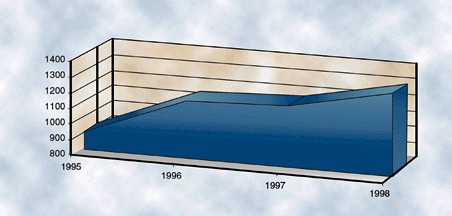|
|
DSC Tech Library
CTI Computer Telephony Integration
 This section of our technical library presents information and documentation relating to Computer Telephony and Computer Telephony Integration software and products.
Computer Telephony Integration CTI software is a rich set of phone software library routines that enable application programs to control your phone system.
This comprehensive CTI software lets you increase employee productivity, enhance customer service and reduce costs by combining the capabilities of our PACER phone system with the custom functionality of your Windows, Unix or Web applications.
Data collected by your phone ACD (Automatic Call Distribution) or IVR (Interactive Voice Response) systems can be passed to your existing PC, Unix or Web applications through our phone software.
The PACER predictive dialer can automatically call your customers and pass only connected calls to your agents. With our computer telephony software, your telephone and computer work together to provide cost-saving benefits.
This section of our technical library presents information and documentation relating to Computer Telephony and Computer Telephony Integration software and products.
Computer Telephony Integration CTI software is a rich set of phone software library routines that enable application programs to control your phone system.
This comprehensive CTI software lets you increase employee productivity, enhance customer service and reduce costs by combining the capabilities of our PACER phone system with the custom functionality of your Windows, Unix or Web applications.
Data collected by your phone ACD (Automatic Call Distribution) or IVR (Interactive Voice Response) systems can be passed to your existing PC, Unix or Web applications through our phone software.
The PACER predictive dialer can automatically call your customers and pass only connected calls to your agents. With our computer telephony software, your telephone and computer work together to provide cost-saving benefits.
IP Telephony Jumpstarts IVR
BY BRIAN STRACHMAN
Picture this: you are hurrying down one of the back roads of convergence, driving past two parked vehicles, one disabled, the other supplying a charge. You sense something is amiss, so... you hit the brakes! Backing up, keeping your eyes on the rear view mirror, you realize what struck you as so odd. The stalled vehicle, interactive voice response (IVR), is drawing a charge from Internet telephony. You can't help but wonder: How did these two ever cross paths?
IVR: FROM THE FAST LANE TO THE SHOULDER
In the late 1980s and early 1990s, IVR was in high gear. The technology of IVR had demonstrated its reliability, and IVR was recognized as a boon to productivity. Businesses were beginning to understand the benefit of handing off some of the more repetitive customer service tasks to a machine. In certain markets, particularly financial, an IVR unit was seen as a competitive advantage, if not an absolute necessity.
Unfortunately, IVR began to falter in 1997, when concerns over Y2K issues plagued the industry. Not only were many IVR systems based on older, non-Y2K-compliant platforms, these systems were often proprietary, making them difficult if not impossible to fix. In addition, 1997 was the year that the Internet went mainstream. Many buyers had no idea how the Web would change the face of customer interaction. As a result, the buyers grew hesitant, and IVR sales lost all acceleration.
Later, in 1998, the market recovered, albeit slightly. The Internet and Y2K were still concerns, but the market did benefit, if indirectly, from dramatic growth in the call center industry. As a critical piece of any customer interaction package (or any customer relationship management solution — a use the new buzzwords), IVR found it could cruise along at a decent speed, even if it couldn't challenge the speed limit.
TIME FOR A PEEK UNDER THE HOOD?
Vendors are just now figuring out that a Web site alone simply won’t cut it, and that human, or at least voice, interaction is still necessary to close most sales. This realization is driving many e-businesses to rethink their sales strategy. Consequently, the IVR market is enjoying a small but welcome boost.
However, I believe that it won’t be just call centers that significantly impact the IVR market in the future. The next market growth push will come from Internet telephony service providers (ITSPs).
ENTER MR. GOODPACKET
ITSPs make their money by selling Internet telephony, that is, voice communications based upon IP packets. That, in a nutshell, is what I learned at the first annual Internet Telephony™ EXPO, where I spoke to most of the major players in the industry, both vendors and service providers.
While I had originally set out to find some innovative, revenue-generating applications that were made possible by this technology, I came to the conclusion that the market is still focused on one factor: minutes.
The ITSP Business Model
ITSPs make their living by selling reduced rate domestic and international long distance, usually at a fraction of what the traditional carriers are charging. The market is still in its infancy, and the war is being waged on the battlefield of price.
While I believe that a business model based solely on price is unsustainable over the long term, there is still some serious money to be made over the next several years. However, many of the ITSPs are small and relatively unknown to the average consumer. That being the case, these service providers are targeting the low-hanging fruit of the discount long-distance market: the financially handicapped and international callers such as students and immigrants.
The Enabler: Pre-Paid Applications
These companies have found that the most efficient way to market to this particular demographic is through pre-paid applications such as calling cards. Pre-paid long-distance calling cards are easy to sell by positioning them in every corner convenience store and checkout isle, particularly in neighborhoods populated by the target demographic.
Such was the message I encountered at the EXPO, where the assembled were amazingly consistent. Virtually every ITSP described the same scenario and expected similar results. Again, competing based on price is not a sustainable long-term business model, but it will work for a few years. At the very least, it will help some of the ITSPs get through their first few tumultuous years in business.
POWERING IVR
Finally, here’s where Internet telephony relates to IVR. Since next-gen service providers delivering Internet telephony frequently employ pre-paid applications, and since nearly all pre-paid applications rely on an IVR front end, Internet telephony will, as it grows, require more IVR installations. Among other things, IVR will be used to reload a pre-paid calling card with minutes by applying a charge to a credit card account.
This trend is just now beginning, and IVR vendors would be wise to begin marketing to both ITSPs and Internet telephony gateway vendors (before they start producing their own internal IVR platforms).
BACK TO THE FAST LANE
I believe that the IVR industry is in for an unforeseen boost from the Internet telephony industry. As a result, the industry will again receive the attention it deserves, and has been lacking in recent years. IVR vendors will have both the notoriety and revenues to reposition themselves as something more than a mere adjunct. They will, instead, position themselves as a critical piece of any electronic commerce solution.
I hope that e-businesses will realize that a Web site alone will never be sufficient, and that voice interaction will always be a necessary part of any sales strategy. ITSPs will give the IVR industry the attention it needs to remind everyone just how important voice really is.

Figure 1. IVR revenues in the United States (in millions of dollars)
Brian Strachman is industry analyst, Voice and Data Communications, Cahners In-Stat Group. To correspond with the author, please send your comments to brians@instat.com.
|


 This section of our technical library presents information and documentation relating to Computer Telephony and Computer Telephony Integration software and products.
Computer Telephony Integration CTI software is a rich set of phone software library routines that enable application programs to control your phone system.
This comprehensive CTI software lets you increase employee productivity, enhance customer service and reduce costs by combining the capabilities of our PACER phone system with the custom functionality of your Windows, Unix or Web applications.
Data collected by your phone ACD (Automatic Call Distribution) or IVR (Interactive Voice Response) systems can be passed to your existing PC, Unix or Web applications through our phone software.
The PACER predictive dialer can automatically call your customers and pass only connected calls to your agents. With our computer telephony software, your telephone and computer work together to provide cost-saving benefits.
This section of our technical library presents information and documentation relating to Computer Telephony and Computer Telephony Integration software and products.
Computer Telephony Integration CTI software is a rich set of phone software library routines that enable application programs to control your phone system.
This comprehensive CTI software lets you increase employee productivity, enhance customer service and reduce costs by combining the capabilities of our PACER phone system with the custom functionality of your Windows, Unix or Web applications.
Data collected by your phone ACD (Automatic Call Distribution) or IVR (Interactive Voice Response) systems can be passed to your existing PC, Unix or Web applications through our phone software.
The PACER predictive dialer can automatically call your customers and pass only connected calls to your agents. With our computer telephony software, your telephone and computer work together to provide cost-saving benefits.
